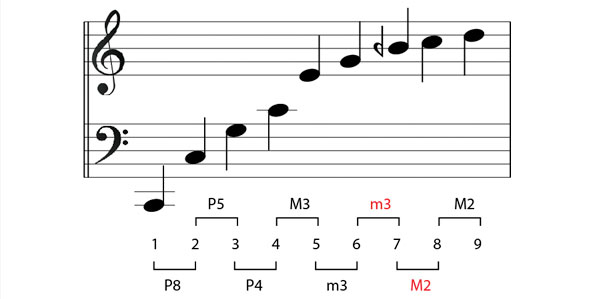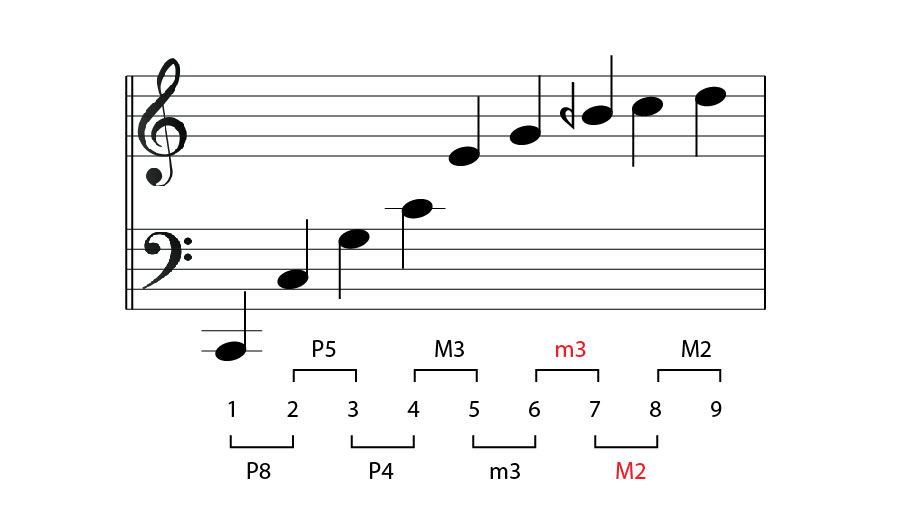The Natural Harmonic Series
In my Tuesday evening beginning recording class, I introduced the basic concepts of acoustics. I’ve already talked about a couple of the basic ideas in a previous post including frequency and amplitude (You can revisit that post at Intro To Recording Day 1. The final major concept is the harmonic spectrum.
How is it that music listeners can tell the different between an oboe and a flute playing the exact same pitch? I apologize for jumping ahead here by talking about pitches rather than frequency (pitches are the musical terms for a subset of the continuous frequencies of physics and the discrete collection of 12 named tones (C, C#, D, D#, E, F and so on until B) we use in music. If two different instruments (or even two individual players of the same instrument) play the same note at the same dynamic level, they sound different. What causes them to have unique and separate tonal characteristics?
They sound different because they produce a fundamental frequency along with a whole bunch of “overtones” or “partials” of varying complexity and amplitudes. They produce different harmonic spectra depending on the construction of the instrument (single reed, double reed, conical shape vs. cylindrical etc) and the way the performer forms each tone. The individual elements of the harmonic spectrum are members of the “natural overtone series”, which is an acoustic reality that is unchanging. In fact, the principals of the natural overtone series have been known since the time of the ancient Greeks.
Whenever a musical tone is produced the fundamental pitch (a unique frequency like A-440 Hz) is accompanied by “overtones” that are integer multiples of that fundamental frequency. We’re probably all familiar with the notion that an octave is built on the numerical ratio of 1:2 or 2:1. If you start with a 100 Hz tone and then play a tone that has a frequency twice that value, the perceived pitch will be one octave higher…cut it in half and you descend an octave.
But all of the other musical intervals can be determined quite simply by looking at the numerical relationships (the ratios) between individual members of the natural harmonic series. Take a look at the diagram below:
Figure 1 – The first nine overtones of the natural harmonic series [Click to enlarge]
The harmonic series continues way beyond the first nine but this is as far as I take my recording students. Every musical tone (the harmonic not the inharmonic ones) contains these “overtones”. The amplitudes of the individual “overtones” (aka partials) are unique between instruments. Some have more odd numbered overtones and some more of the even ones.
The musical intervals (Perfect octave, perfect fifths, major and minor 3rds etc) can all be derived from the series. The ratio of 1:2 is the octave just as 4:5 is the major third and so one. The B flat (with the flat facing the wrong way) is an out of tune pitch. It is mathematically correct (in mean tone tuning) but in our equal temperament tuning system, it’s way off…so the corresponding intervals are not used.
The topic of tuning systems and their development is beyond this brief introduction but I’ve always found it interesting to present the basics of acoustics to recording students. Then I introduce the world of music terms and descriptors. After all, part of the job of a recording engineer is to bridge the gap between the technical aspects of acoustics and audio equipment and the musical world.



Just to extend the conversation a little further: Another important factor in distinguishing one instrument from another is their dynamic “envelope” – how the sound rises, sustains, and decays over time. Some instruments can have a similar harmonic structure (or timbre) but because of their attack or decay are recognized as different and unique. I also believe that the “phase” relationship between the harmonics is also very important for the accurate reproduction of an instrument. Some microphones and loudspeakers are better at preserving these “time domain” relationships better than others while some make a mess of it.
Also – some of the sounds an instrument creates are not harmonically related to the pitch being played – in other words there are “noises” associated with the sound of that particular instrument. An example is the initial clicking noise of a guitar when the string is “picked” or the scraping sound of a bow on the strings of a cello. High definition recordings maintain these nuances with great detail and contribute greatly to the feeling of “aliveness” of the recording.
I’m really enjoying your daily posts. Very thought provoking!
Very true…and thanks for the additional explanation. I didn’t talk about time or spectra envelopes…or inharmonic elements, but they are all important considerations.